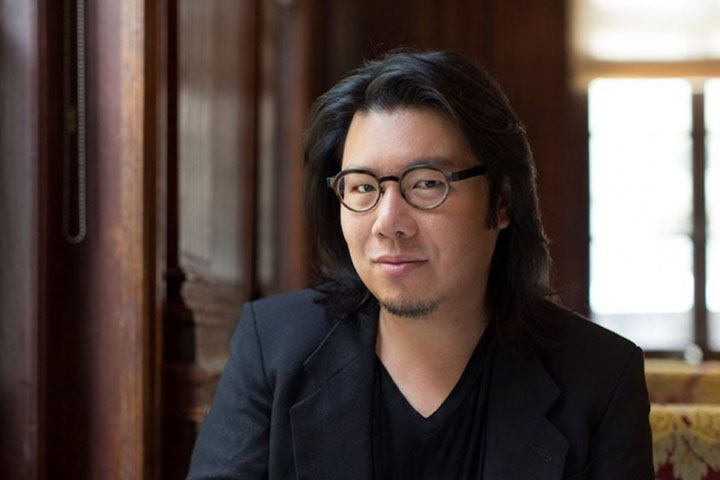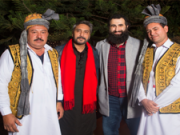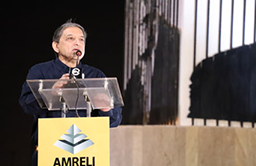
Our favourite Oriental writer with tales rich with (literally) folklore, lifestyle and piles of gold is back with a third and final salacious and delicious novel in this trilogy, ripe with all the ingredients that made him a bestselling writer in the first place.
While book no 2 seemed to venture a little further from reality with the appearance of Rachel’s father, newly discovered relatives, and moving the story to China, this sequel brings the story right back home to Singapore — albeit adequately updated with Maticevski and Delpozo.
The delicate matter at hand in this particular case is the setting, the one central place the series has called home since the very first book. The home that Nicholas Young grew up in, considered the most historic and largest private residences in Singapore, and the Young family’s ancestral home, Tyersall Park. As Su Yi undergoes a massive coronary incident that leads to not just her immediate but also her extended family showing up to stay at her residence in order to see her possibly for the last time, and anticipate their place in the will. At the heart of all this speculation lies the question of the inheritance of Tyersall Park, long considered to have been left to Nicholas Young, her favorite grandson. However, since their estrangement five years ago at Su Yi’s disapproval of his wife Rachel, all anticipate Tyersall to be promised to a new owner. And so ensues a comedy of errors so to speak, as Su Yi holds on for dear life, the residents of the Park engage in brazen plotting and planning, manipulating and scheming all the while our beloved characters, Nick and Astrid who also happen to be Su Yi’s favourite grandkids, try to work through their personal lives whilst weaving their way through multiple schemes bring thrown at them.
Going deep into the history of the Young family, and how they came to garner the attention and respect they hold via flashbacks, we are taken back to Su Yi’s childhood, the young family’s early years and the inner workings of Tyersall Park – one that would easily put Downton Abbey to shame.
The book becomes very real, very fast, as it explores grief in a very real way. For a series known for ridicule and hilarity, this is a noted change. Su Yi is examined closely as stoic and deeply rooted in traditional Chinese values, as her lineage is traced back to World War 2, spanning the Japanese occupation of the island of Singapore, and the role Su Yi, her family and Tyersall Park played in it.

It would help to add here that Tyersall Park served as a refuge for British officers during the Japanese occupation of the island during World War II including plenty clandestine exits and entrances that saved many lives, deeming it a veritable historical landmark. This note deems useful for Nick as he races to find a suitable future for his beloved Tyersall Park, as bidders and developers begin circling in anticipation of the announcement of her will.
Kwan does not disappoint with his meticulous details, exotic cities, characters and plots one of which includes Astrid being serenaded by Shah Rukh Khan at Umaid Bhavan Palace in Jaipur – all the while remaining steadfast to his overarching theme of family. Kwan extends a slight departure from his previous books, as much as each chapter is laden with decadent details of fashion, art, history and of course gossip, he steers away from the absolute over-the-top decadence, instead keeping the story poignant, focusing on family, legacy and history.
“I made my money the old-fashioned way. I was very nice to a wealthy relative right before he died.”
– Malcolm Forbes.
As much as the story evolves to tell the story of how Su Yi came to be the matriarch of the Young family, the detailed history touching on the softer notes also point to Kwan’s own evolution as a writer, and specifically as the writer of this particular series. Equally innovating and shocking, the story evolves to become a fitting conclusion to the much-beloved series, in one of several new arcs as it sheds old storylines, characters and even backdrops and settings. A must-read for all Kwan fans, and those looking for a well-scripted light family drama.
Excerpt from book:
““Ladies, let me show you something very special that Giamba has been toiling away at for weeks. Come with me.” He pressed against one panel of the boiserie walls, revealing Giambattista’s inner sanctum – a hidden workroom that contained only one gown displayed on a mannequin in the middle of the pristine space. “This dress was inspired by Gustav Klimt’s Adele Bloch-Bauer I. Do you know the painting? It was purchased for $135 million by Ronald Lauder and hangs in the Neue Gallerie in New York.”
The ladies stared in disbelief at the artistry of the off-the-shoulder ball gown that transformed from ivory tulle at the bodice and into a simmering gold column, with a cascading train-length skirt embroidered with thousands of gold chips, lapis lazuli, and precious gemstones, painstakingly scattered into a swirling mosaic pattern. It truly looked like a Klimt painting come to life.”
![]()
REVIEW: FAIZA VIRANI










































